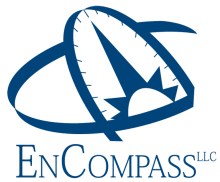Increasingly, evaluators, trainers, and technical assistance providers are being asked to bring communications and knowledge management skills to bear in support of encouraging uptake and use of final project deliverables. In part one of this blog series, we shared the importance of mapping utilization objectives for each potential audience and then mapping where and how best to reach each group.
Once you know your audience and have identified your objectives and key messages, you are ready to develop a report or other communication product that shines. As you get to work, we recommend you keep the following “Cs” in mind:
- Colonialism and Capitalism – Be aware of the language that arises from colonialism and capitalism, and look for substitutions. For example, instead of “the field,” try referring to the particular country.
- Concise – Keep it short!
- Credibility – Communicate in a way your audience finds compelling, drawing on sources they see as reliable.
- Call (to Action) – Help your audience know what you want them to do with the information you are providing. A clear call to action will help them put the information that you are providing to use!
- Clarity – Use plain language as much as possible. Eliminate jargon to encourage understanding and use. When you can, eliminate the acronyms as well. If your audience doesn’t understand what you are talking about, they cannot heed your call to action.
- Creativity – Ensure your products are compelling in look and feel and follow best practices related to spacing and colors, length, and imagery.
- Conversation – When you can engage groups in conversation around topics you are trying to share, consider a webinar or a blog post that encourages engagement. Whether big or small, the opportunity to react to what you are sharing can raise engagement levels to new heights.
- Co-creation – Use translators, harness technology, request photos or voice messages. Do what you need to but find ways to bring the people you are working with and for into your communications efforts. Their voices will be the most effective in calling for change.
- Conformance – Attend to 508 compliance considerations by building in the time you need to make all products conform to the necessary standards for accessibility. For live meetings or events, be sure to consider what language or accessibility needs your audience may have. Arrange for transcription, translation, or whatever support is required.
Special Note on the “Cs”: There are lots of opinions on what the “C’s of Communication” ought to be. A simple online search will reveal a wide variety of options for you to consider. Check them out. Many good communications principles out there start with the letter C.
What we focus on grows!
The more you think about uptake and use during the planning stages, the more likely you will be able to see uptake and use achieved at the end of your engagement. We create resources (reports, videos, websites, etc.) for people who need something from us. The more we can infuse a human-centered design mindset into our reporting and communications efforts, the more successful we will be in supporting real change.
We wish you the best of luck on this journey. We’d love to know what strategies have worked for you in this communications and reporting effort or see examples of some of the amazing products you have produced!
Additional Online Resources
Check out some online resources that inspire us:
- Ann K. Emery’s podcast on Data Visualization and Slide Design
- How to Increase Social Media Engagement: A Guide for Marketers – from Hootsuite
- Stop Raising Awareness Already – by Ann Christiano and Annie Neimand
- Words Matter – by Elizabeth Grim
Interested in Learning More….
If you would like to learn more about effective reporting and presentation techniques, check out our EnCompass Learning Center courses on:


Leave a Reply